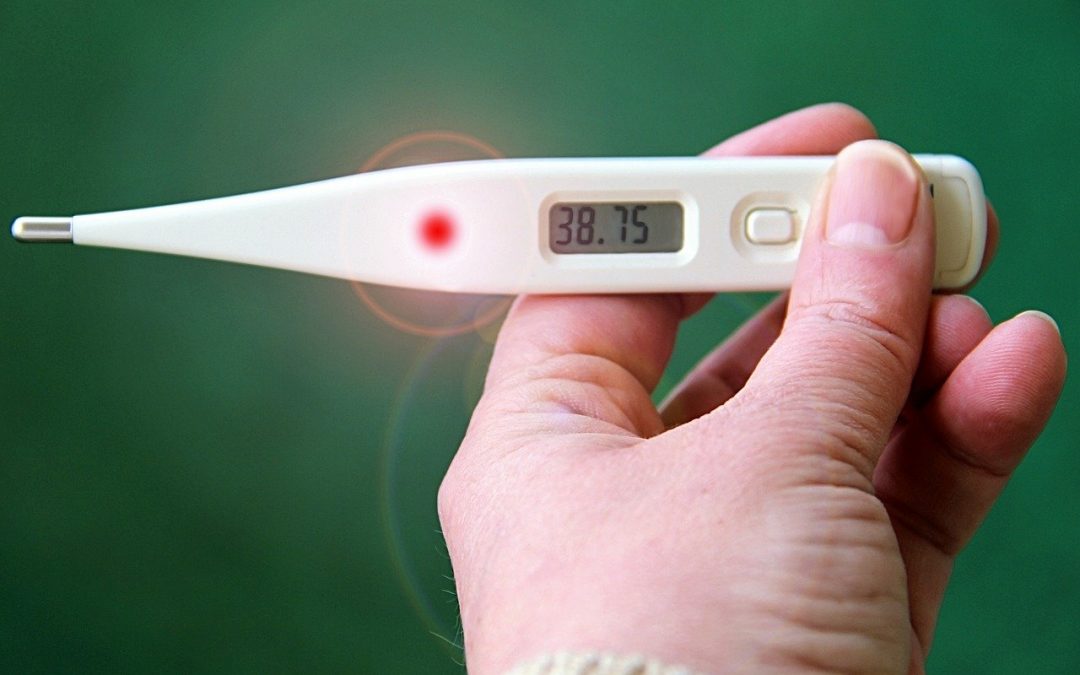A fever is actually a wonderful thing. We know that fevers increase survival and that suppressing fevers actually increase the length of illnesses and increases mortality. 1 2 A fever is “Nature’s efforts to repair injury or to remove from the system some kind of morbid matter, virus, poison or microorganism dangerous to health and life.” Lindlahr1
Bacteria and viruses thrive at normal body temperatures. When that temperature rises they unable to function as before. Higher temperatures raise our metabolism. This means that immune cells made by our body are produced much quicker. Some immune cells that produce anti-bacterial substances have that production increased. These cells are also allowed to move to the injuries or infection quicker. Iron, which bacteria and viruses need, is sequestered into the cells and is not floating free for their use. It also increases substances that cause us to feel achy. This is also good because it makes us go to bed. When we are sick the best place for us is in bed. We want as much energy as possible to go toward healing.

So, what is a good temperature to do all this? The perfect fever is 103°F. Yes, I know, for all of us that have been taught to get rid of a fever when it gets to 101°F, this might be scary. I promise the brain is not going to melt. If worried about brain health we can use a cool cloth to the head. A fever does not harm the body until it reaches more than 105°F.
People with strong immune systems, like children, will often spike a high fever even when they are not very sick.
People with a weakened immune system, like the elderly, have a hard time producing a fever. They may be very sick and have no fever at all. That being said, when I start to feel like I may be getting sick, the first thing I do is try to induce a fever. Usually by taking really hot baths.
A word about fever induced seizures. Although they are rare, they do happen occasionally. Most of the time it isn’t the high temperature that causes them, but the speed in which the high temperature was attained. When a medicine is used to reduce the temperature, it is fighting against the body which is trying to produce a fever for all the above reasons. When the medicine starts to wear off, the body may cause the temperature to shoot up quickly which could cause a seizure. So if using meds to reduce fevers, be diligent with the dosing. Also, if you have ever had a fever induced seizure do not allow your fever to reach high levels.


There is the question about how we should eat when we have a fever. We need energy to fight infection. Digestion takes a lot of energy. So eat when you are hungry, but don’t push food. Eat food that is easy to digest and nutrient dense. Bone broth and soups are good examples.
- Marik PE, Fever in the ICU. Chest 2000; 117:855-69
- Mackowiack PA. Concepts of Fever. Arch Intern Med 1998; 158:1870-81.
- Lindlahr—Dr Henry Lindlahr (1862-1924) He suffered from diabetes and could find no treatments in America so he traveled to Europe where he was cured using natural therapies. When he returned he attended the Homeopathic and Eclectic College of Illinois. He later founded the Lindlahr College of Natural Therapeutics. He pioneered the use of vitamin and mineral supplementation.
Disclaimer:
No statements on this website have been evaluated by the FDA. No statement on this site constitutes medical advice. Consult a medical doctor before trying any remedy on this website. We do not claim that any remedy on this site will cure anything. We are sharing our own anecdotal experiences with these formulas. All remedy ingredients are clearly stated. You are responsible to know your own allergies and to protect against them.

